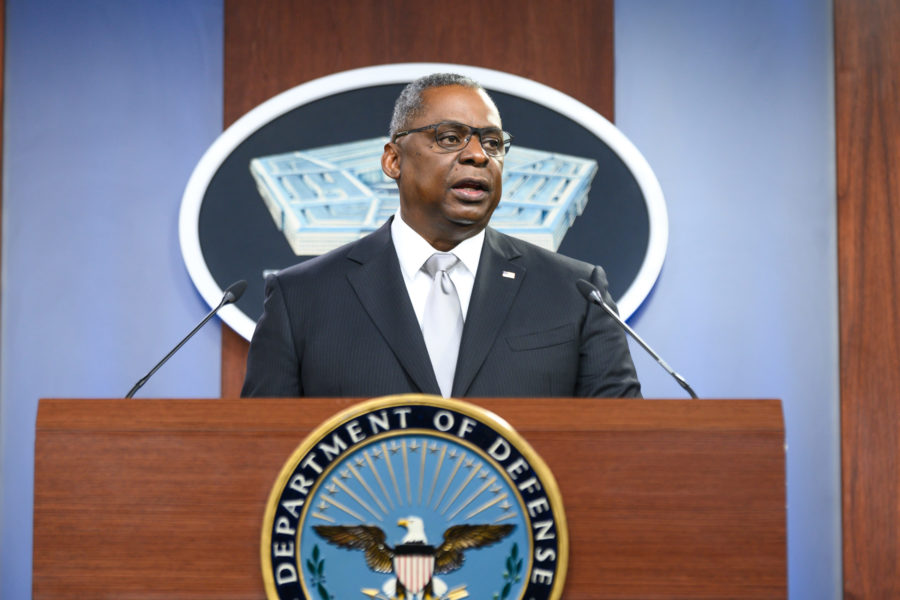Defense Secretary Lloyd J. Austin III on June 10 would not say whether the U.S. military will still conduct airstrikes in Afghanistan to defend population centers after the retrograde completes this summer, but he said the Pentagon is pursuing ways to base surveillance and strike aircraft closer to the country.
The New York Times reported that the Defense Department is considering authorization to provide air support for Afghan forces if the Taliban threatens to take Kabul or other major cities after U.S. forces leave. This would be a change from the current publicly disclosed plan to conduct “over-the-horizon” counterterrorism operations to deter attacks that would target the U.S.
Austin told lawmakers the mission that U.S. troops had in Afghanistan, to prevent attacks on the American homeland, has “been accomplished” and that now the Pentagon’s job is to move people and equipment out of the country.
“Going forward, in terms of our [counterterrorism] efforts, those CT efforts will be focused on those elements that can possibly conduct attacks against our homeland,” Austin said.
When asked if U.S. aircraft would strike in support of Afghan forces to protect cities after the withdrawal, Austin said he would not speculate on “any potential outcomes or any potential future actions.”
“We continue to provide support to the Afghan security forces as we retrograde,” he said. “Once we have completed our retrograde, that will be very difficult to do because our capabilities will have diminished in country.”
The U.S. military is flying intelligence, surveillance, and reconnaissance and combat aircraft from bases in the Persian Gulf area.
“We have the capability now to do that,” Austin said. “What we are looking for is the ability to shorten the legs going forward by stationing some capability in neighboring countries. That is still a work in progress.”
These possible bases have been discussed since President Joe Biden announced the withdrawal in mid-April, though no specifics have been proposed.
Acting Air Force Secretary John P. Roth, in testimony before the Senate Appropriations defense subcommittee on June 8, said USAF requested about $10 billion in its 2022 budget for its enduring presence in U.S. Central Command as operations within Afghanistan draw down.
“We have a series of air bases, they will stay for the time being, that’s where your over-the-horizon capability will come from,” Roth said.
Austin said there are still some MQ-9 sorties originating from within the country, but “essentially the vast majority of ISR is being provided from other places outside Afghanistan” to protect U.S. forces as they withdraw.
Following the withdrawal, the U.S. military intends to “maintain a good and productive relationship with the Afghans,” including continuing funding for the military and supporting the government.
“I think that support is critical in ensuring that the government retains the ability to function and that the military remains intact,” he said.
The Pentagon has sufficient authorities to conduct these missions on “a discrete set of threats,” such as al-Qaeda, Austin said, without naming the Taliban. The U.S. also plans to keep its embassy in Kabul, and the military is working with Afghans on protection for that facility.
